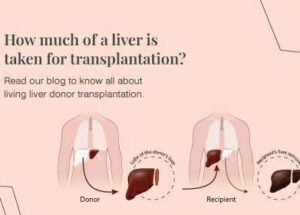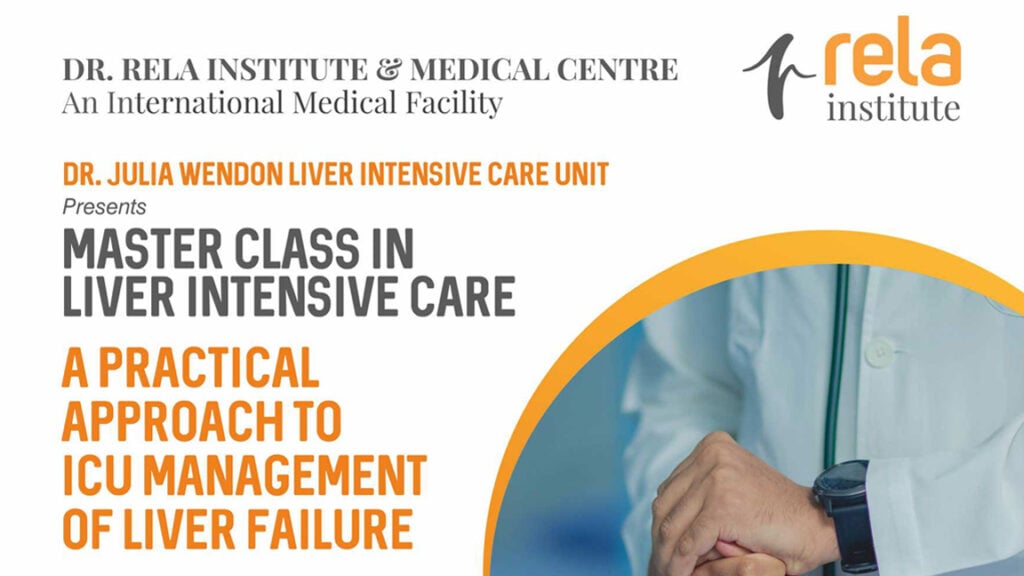RILDT is considered the best hospital for liver cancer in Chennai and has one of the highest liver cancer survival rates. We are good because we identify liver tumors, which usually do not present with any specific symptoms until they are large in size. Most are identified incidentally when the patient undergoes a health checkup. Examples of cancerous tumors are hepatocellular carcinoma, cholangiocarcinoma, tumors that have spread to the liver from other organs (bowel cancer, neuroendocrine tumor, cancers of kidneys and genital organs).
The best liver cancer treatment for most cancerous hepatic tumors is surgical, in which the portion of the liver that is affected by the tumor is removed. Some patients may be unsuitable for a major liver operation either because of poor medical condition or advanced disease. These patients may be suitable for non-operative treatments such as chemotherapy or radiotherapy given specifically into the blood vessels supplying the liver (TACE or TARE). Prompt consultation with a specialist liver surgical team is likely to result in quick evaluation and optimal treatment of the liver tumor or hepatic tumor. Appropriate treatment is likely to result in a favorable outcome.
What are Noncancerous Liver Tumors?
Benign (non-cancerous) tumors are rather common and typically show no symptoms. They tend to go undetected until a magnetic resonance imaging, computed tomography, or ultrasound study has been conducted. Benign liver tumors come in a variety of types, such as the following:
Hepatocellular adenoma: The use of particular medications has been linked with this type of benign liver tumor. The majority of these tumors go unnoticed. Surgery may be necessary if an adenoma bursts and bleeds into the abdominal cavity. Rarely do adenomas develop into malignancy.
Hemangioma: A mass of atypical blood vessels is this kind of benign liver tumor. Usually, no treatment is necessary. Large hepatic hemangiomas in babies can occasionally necessitate surgery to avoid clotting and heart failure.
What are Cancerous Liver Tumors?
Malignant cancerous tumors have either spread from other cancer sites in the body (metastatic liver cancer) or started in the liver (primary liver cancer). The majority of cancerous liver tumors are metastatic.
Liver cancer (Hepatocellular carcinoma)
Hepatocellular carcinoma is the most common primary tumor arising from the liver. Most patients with this disease have background cirrhosis of the liver or some form of chronic liver disease due to viruses, alcohol abuse or fatty infiltration, but about one-third will have normal livers.
Symptoms
The most common symptoms of a hepatoma are listed below. Each person may, however, have a unique set of symptoms. Symptoms could consist of:
- Pain in the abdomen
- Loss of weight
- Feeling nauseous
- Vomiting
- A large mass in the upper right abdomen, which can be felt
- Fever
- Jaundice, yellowing of the eyes and skin turning.
- Continuous itching
Liver hepatoma symptoms can mimic those of other illnesses or issues. For a diagnosis, always get advice from your physician.
Diagnosis
These tumors are often asymptomatic, and even when large, may cause only non-specific symptoms. The only way to diagnose these tumors early is to screen patients with cirrhosis and other above-mentioned liver diseases at 6-monthly intervals with ultrasound of the liver and blood tests (serum alpha-fetoprotein level). Screen-detected cancers are usually small and can be effectively treated.
Liver Tumor Treatment
Patients who are cirrhotic and have early tumors are best treated by liver transplantation the only treatment that potentially cures both the cancer and the cirrhosis. Patients without cirrhosis will benefit from surgical resection of the tumor. Unfortunately, many patients are diagnosed only once the tumor is large. They may require alternative non-surgical treatments such as TACE (Trans-arterial Chemoembolisation), RFA (radio-frequency ablation) or TARE (trans-arterial Radioembolisation) to shrink the tumor. Patients who respond well to these treatments may fulfill criteria for transplantation or resection. The advantage of treatments like TACE and RFA is that they can be repeated when necessary. Some advanced drugs may be prescribed that benefit patients in whom no other treatment is effective. They may also be used to supplement the effects of non-surgical interventions.
Cholangiocarcinoma (Bile duct cancer)
Bile duct cancers may develop in the bile ducts within the liver (Intra-hepatic cholangiocarcinoma), outside the liver (Perihilar cholangiocarcinoma), and in the lower end of the bile duct close to the pancreas (distal cholangiocarcinomas). Intrahepatic cholangiocarcinoma has symptoms that are very similar to hepatocellular carcinoma. A tumor marker, CA 19/9, may be elevated in these tumors. A CT scan can help differentiate them from hepatocellular carcinoma. Treatment options consist of surgical resection and/or RFA when possible and chemotherapy for the remaining patients. Distal Cholangiocarcinomas cause symptoms like cancers of the head of the pancreas, typically deep jaundice. They may not be visible on CT or MRI scans, but are seen on Endoscopic ultrasound. Treatment is by pancreaticoduodenectomy (Whipple’s procedure) whenever possible. Chemotherapy is advised after recovery from surgery. Perihilar cholangiocarcinomas arise from the junction of the right and left hepatic ducts and typically cause deep jaundice. Though small, tumors in this location place them in close proximity to vital arteries and veins supplying parts of the liver. The blockage of the hepatic ducts also damages the liver cells. Surgery is the ideal treatment for this disease whenever possible, but it is complex. Radiological evaluation of the anatomy of the region by an experienced surgeon and radiologist is vital to plan treatment.
Treatment of cholangiocarcinoma
These are challenging tumors to treat. Major surgery is often required, and a large part of the liver may need to be removed to ensure complete removal of the tumor. These tumors may involve blood vessels to the liver, and this will require complex surgical techniques. Experience in liver transplantation is especially beneficial in these cases. If this is done, the cure rates can reach 50%. Our centre has vast experience in the management of these tumors and has published revolutionary new techniques of surgery for these tumors.
Liver function often needs to be improved prior to such major surgery by relieving obstruction to the side of the liver that is to be preserved with external biliary drainage or stenting. The amount of liver left after surgery is important, and techniques such as portal vein embolization to increase the size of the residual liver may be needed in these patients. Judicious combinations of these procedures provide the best results from surgery.
Gall bladder carcinoma
This disease is more common in North Indians. This is a very aggressive cancer that is often difficult to diagnose early. The best outcomes are in patients with incidentally discovered cancers while being treated for gallstones. Unfortunately, most patients are diagnosed with advanced cancer that has spread to other sites or involved adjacent organs. Patients diagnosed with tumors localized to the region of the gallbladder are best treated by surgery in the form of a radical cholecystectomy. Tumors that have invaded the blood vessels to the liver will need very major liver surgery and should only be done in experienced liver centres. When surgery is not possible, chemotherapy may be effective.
Benign liver tumors
Benign liver tumors include a variety of conditions, including simple cysts, haemangiomas, hepatic adenomas, focal nodular hyperplasia, and other rare conditions. Most are discovered incidentally and are asymptomatic but some may become clinically apparent due to a mass effect. It is important to confidently differentiate them from malignant or premalignant conditions before recommending conservative management. Surgery should be offered only to patients who really need it.
Gall bladder polyps
Gall bladder polyps are small fleshy growths within the gallbladder. These are usually asymptomatic and are diagnosed during routine ultrasound scans done to evaluate abdominal pain. They are important as some of these polyps may develop into cancers over a period of time. The risk is higher when a single polyp larger than 1cm is identified on the scan. These patients may need early surgery and removal of the gallbladder. When the polyp(s) are smaller, it is strongly advised to have repeat scans after 3-6 months to check for any increase in size of the polyp.
Secondary liver tumors
Most metastatic liver cancers are diagnosed in patients already known to have cancer who are on follow-up although some may be diagnosed incidentally or due to symptoms. Unfortunately, most patients with metastatic liver cancer are suitable only for chemotherapy, but those with colorectal cancer metastases, neuroendocrine cancer metastases, GI stromal tumor metastases and selected patients with metastatic breast and head-neck cancer have excellent outcomes with more aggressive treatment including radiofrequency ablation, resection and hepatic artery interventions. Some of these patients will need staged liver resections.


















